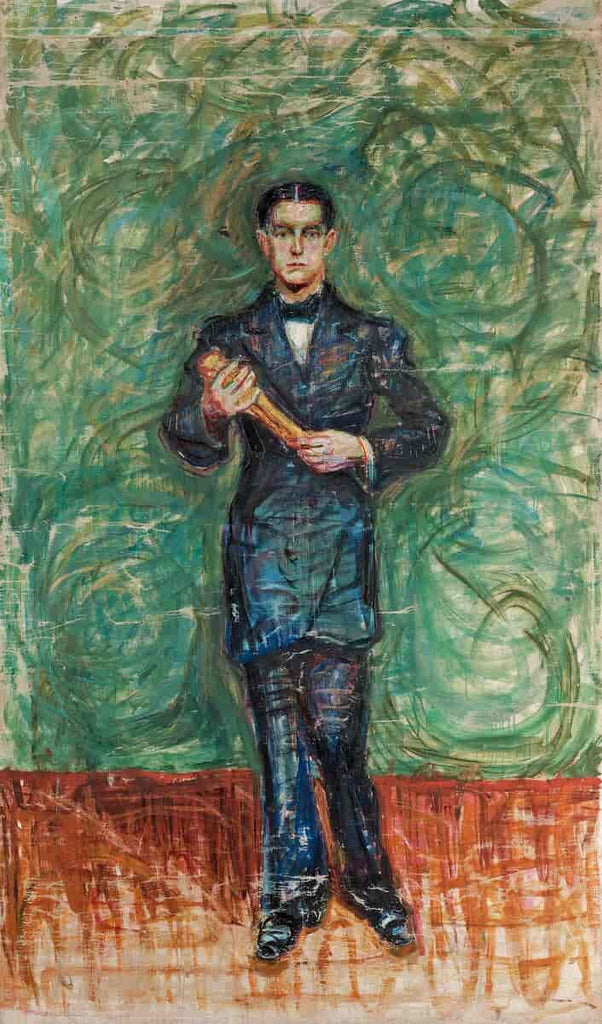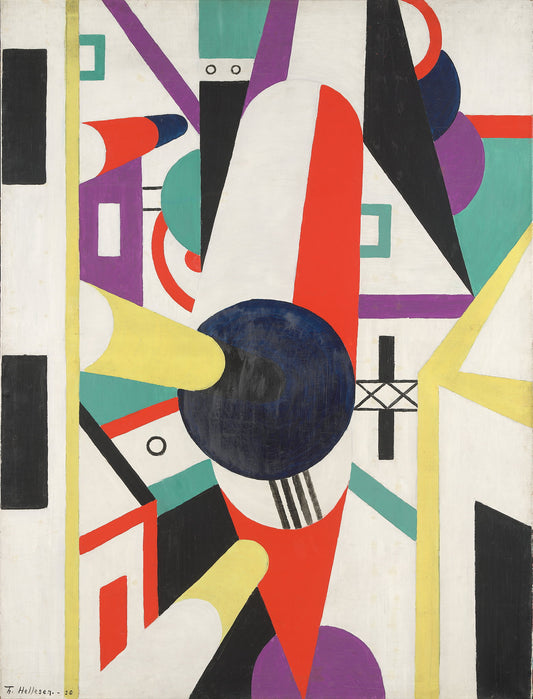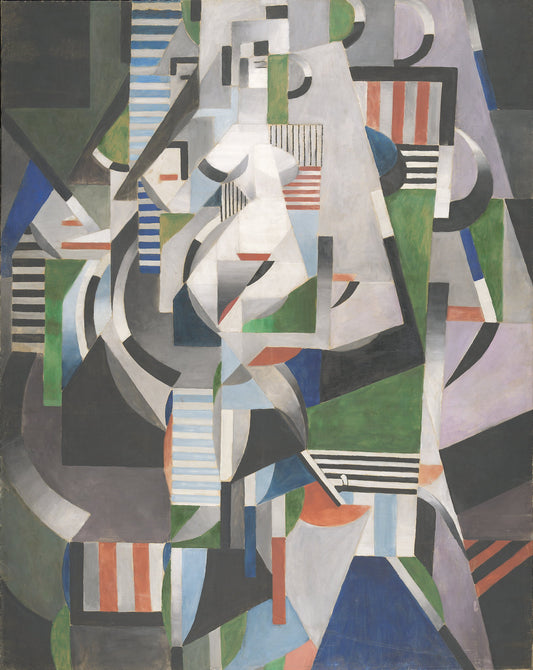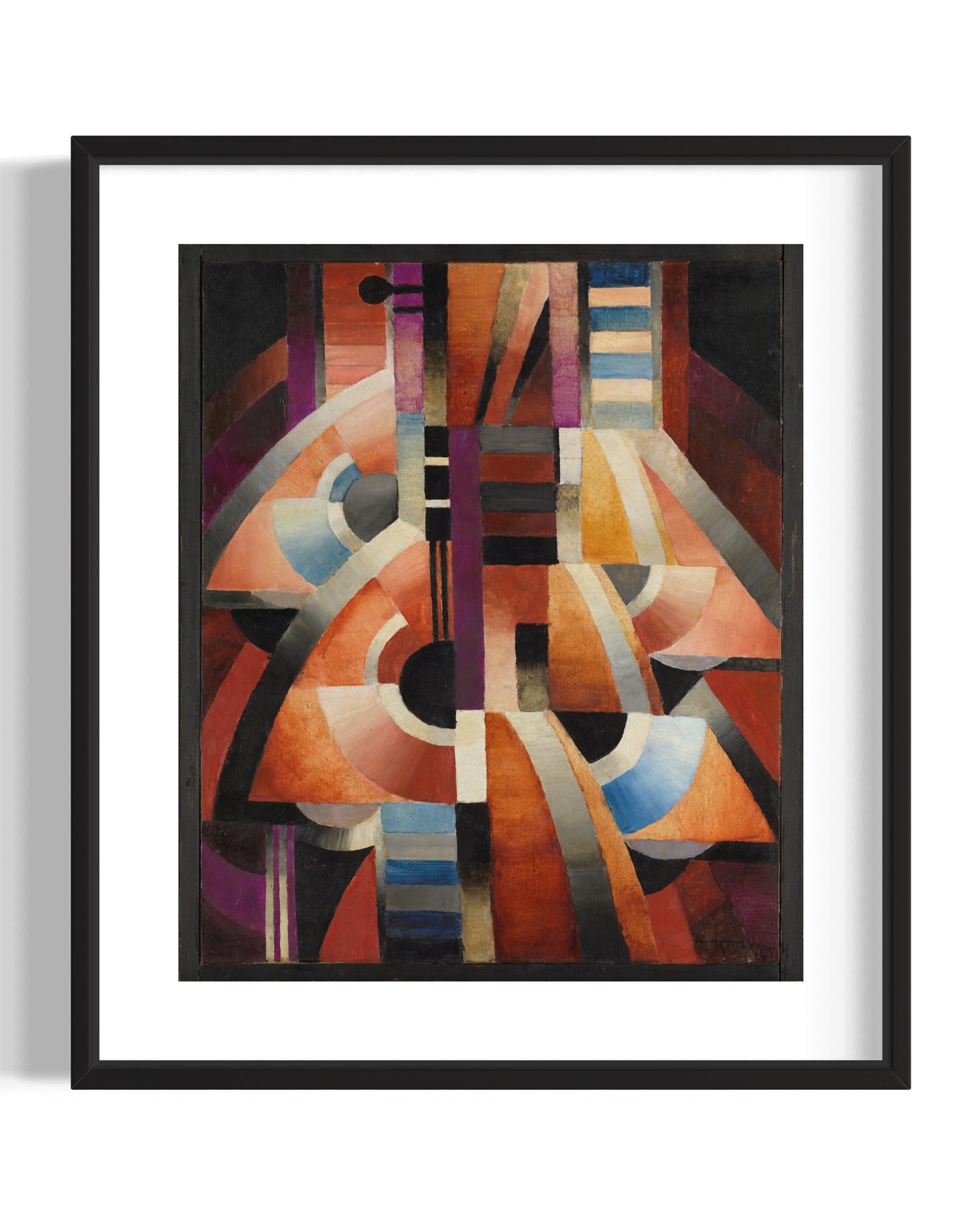Thorvald Hellesen
Balalaika
Balalaika
Pickup available at DÁIDDA galleri & printlab
Usually ready in 2-4 days
High-quality reproductions with authentic colors and details from DAIDDA's exclusive collaboration with the National Museum. Posters are printed on 230g Litho White Matt photo paper with white border and logo. Artprints are printed on 260g Museum Natural Rag 100% cotton paper without white border and logo. Produced to order in our own print lab.
Posers by DAIDDA has been developed in collaboration with the National Museum. By using the National Museum's high-resolution image files, we produce posters that reproduce all the details and structures of the artworks. Posters by DAIDDA offers an image quality that surpasses traditional CMYK printed posters.
About the original:
Why the balalaika was chosen as the starting point for this painting's motif is unknown, but compositions with musical instruments were generally widespread among those working in a Cubist idiom. The relationship between the various art forms, such as music and painting, were also themes that occupied many of the artists of the time. The balalaika has its roots in Russian folk music and is often used to articulate fast, repetitive rhythms. Musicality and rhythm games are something that characterize Thorvald Hellesen's painting. The bright colors and the way the motif is abstracted and dissolved into repeating forms create a dynamic and pulsating visual sound effect.
In the years around 1920, Hellesen was part of the progressive art milieu in Paris, where he was friends with Fernand Léger, among others. He was one of the few Norwegian artists who internalized the impulses from Cubism, but the picture also testifies to an alertness to what was otherwise stirred by the new directions of the time. Together with Ragnhild Keyser and Charlotte Wankel, among others, he is one of the 1920s' leading abstract modernists in Norwegian art.
Hellesen was long forgotten. In the Norwegian contemporary environment, his choice of style was different and radical. After his pictures were met with little understanding in his home country around 1920, he disappeared from the Norwegian art scene, and around 1930 his development as an artist stagnated. Around 1970, however, his production was rediscovered and appreciated in a way that has since given him a more rightful place in Norwegian art history.
Text: Øystein Ustvedt
Dating: approx. 1914-1916
Other titles: Balalaika (ENG)
Designation: Painting
Material and technique: Oil on canvas
Technique: Oil
Material: Canvas
Dimensions: 61 x 50 cm
Subject: Visual arts
Classification: 532 - Visual arts
Motif: Abstract
The visual art collections
Photo: Høstland, Børre
Shipping and returns
Shipping and returns
Shipping: We deliver to Scandinavia, the EU, the USA and several other countries. Please contact us if your country is not listed and we will try to arrange delivery.
Delivery time: 2-5 days within Norway, 7 days in Europe, 14 days globally.
Packaging: Our products are made to order and sent rolled in environmentally friendly packaging.
Customs Fees: International orders may be subject to customs fees, which are not included in shipping costs.
Return policy: You can return images within 14 days. See our returns page for more information.
Secure Payment: We never store your payment details. See our privacy policy for details.
See all works
-
Composition
Vendor:Thorvald HellesenRegular price From 150,00 NOKRegular priceUnit price per -
Composition
Vendor:Thorvald HellesenRegular price From 150,00 NOKRegular priceUnit price per -
Composition
Vendor:Thorvald HellesenRegular price From 150,00 NOKRegular priceUnit price per

Thorvald Hellesen
Thorvald Hellesen was a Norwegian painter. He was a student of Christian Krohg at the Norwegian Academy of Fine Arts in 1910–1911. From 1912 he lived in Paris. Here he became a pupil of Fernand Léger and came up with a cubist form of expression of a distinctly decorative character.
From around 1915 he made abstracted human figures and still-life representations (often with musical instruments). He also created abstract compositions made up of clearly defined geometric shapes, partly monochrome, partly with sliding silkscreen-like color transitions. Collage elements are also found in his pictures, such as newspaper clippings, pieces of wood, silver paper and the like. His idiom around 1920 is akin to Léger's contemporary painting, machine cubism, where recognizable and abstract pictorial elements are juxtaposed. In exhibition catalogs from the 1920s, there are no titles for his pictures, only the neutral designation Peinture.
In the first half of the 1920s, Hellesen developed his painting in a plan cubist direction, influenced by Albert Gleizes' ideas. He now worked with decorative art in posters and scenography, and with patterns for textiles and wallpaper. The Art Deco decoration of the Maritime Building in Oslo was begun in 1923. From 1925 he no longer participated in exhibitions. From around 1930, he became more and more isolated in the French art milieu, and plagued by illness, he was transported home to Norway in 1937, where he died shortly afterwards.









